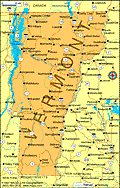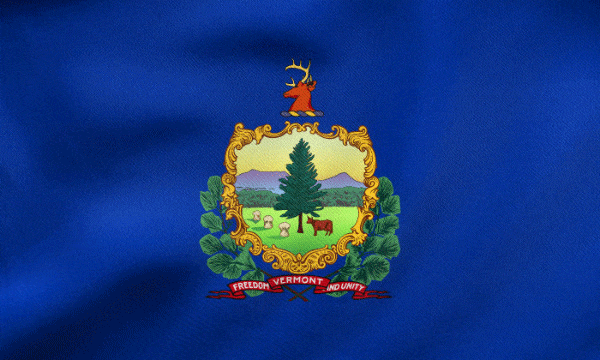 History The Vermont region was explored and claimed for France by Samuel de Champlain in 1609, and the first French settlement was established at Fort Ste. Anne in 1666. The first English settlers moved into the area in 1724 and built Fort Dummer on the site of present-day Brattleboro. England gained control of the area in 1763 after the French and Indian Wars. First organized to drive settlers from New York out of Vermont, the Green Mountain Boys, led by Ethan Allen, won fame by capturing Fort Ticonderoga from the British on May 10, 1775, in the early days of the Revolutionary War. In 1777 Vermont adopted its first constitution, abolishing slavery and providing for universal male suffrage without property qualifications. Vermont leads the nation in the production of monument granite, marble, and maple syrup. It is also a leader in the production of talc. Vermont's rugged, rocky terrain discourages extensive agricultural farming, but is well suited to raising fruit trees and to dairy farming. Principal industrial products include electrical equipment, fabricated metal products, printing and publishing, and paper and allied products. Tourism is a major industry in Vermont. Vermont's many famous ski areas include Stowe, Killington, Mt. Snow, Okemo, Jay Peak, and Sugarbush. Hunting and fishing also attract many visitors to Vermont each year. Among the many points of interest are the Green Mountain National Forest, Bennington Battle Monument, the Calvin Coolidge Homestead at Plymouth, and the Marble Exhibit in Proctor.
|
Read this profile of Vermont to learn about the state's history, points of interest, and government. Also find interesting facts about each state, including the state's motto, symbols, and when it entered the union.




